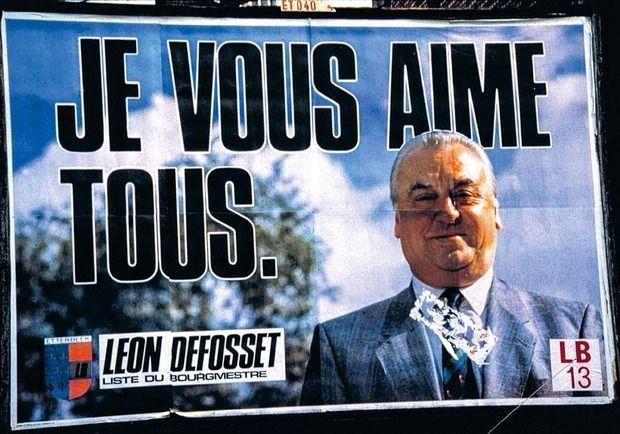Peruvian Extraordinary Congressional Elections 2020
Jan 23, 2020 21:43:57 GMT
Devil Wincarnate, Georg Ebner, and 4 more like this
Post by iain on Jan 23, 2020 21:43:57 GMT
Peru will be holding extraordinary congressional elections on January 26th.
First, some info on the Peruvian political system:
Peru has compulsory voting for those between 18 and 70 years of age, but large numbers of voters spoil their ballots or leave them blank - 35% in the 2016 Congressional elections. The country has a President, elected over 2 rounds of voting (like in France), and a Congress of 130 members. The President can serve more than one term, but not consecutively. The President is head of both state and government, and appoints ministers from the ranks of Congress.
Congress is elected by open list proportional representation based on the regions of Peru. However, the system is not particularly proportional in practice due to small district magnitudes (with the exception of Lima City, which elects 36 members). Furthermore, to win any congressment a party must secure either 5% of the national vote or at least seven members over more than one district. In 2016, Democracia Directa won the popular vote in one region, but did not meet this threshold. This meant that their votes were discarded for the purposes of seat allocation.
Elections are held every five years, but the President has the power to dissolve Congress early (as has happened here) in limited circumstances. Any minister can make a vote in Congress an 'Issue of Trust' - essentially a confidence vote. If the minister loses such a trust vote then they must resign. The President of the Council of Ministers (essentially the PM) can also make an vote one of Trust, and if a vote such as this is lost then all ministers must resign. If two Presidents of the Council of Ministers lose Trust votes within a session then the President has the right to dissolve Congress and call new elections.
Second, some background to why this election is happening:
Back in 2016, Pedro Pablo Kuczynski was elected President, narrowly defeating Keiko Fujimori, the daughter of Alberto Fujimori. However, Fujimori's party, Fuerza Popular, won a majority in Congress, despite gaining just over 1/3 of valid votes. With this split in power two Trust votes were lost in 2017 (the first since the adoption of the 1993 constitution) - Minister for Finance, Alfredo Thorne, was forced to resign in July, followed by the Presidento of the Council of Ministers (and thus all ministers), Fernando Zavala, in September.
Also in 2017, Kuczynski was implicated in the Odebrecht bribery scandal (the scandal which brough down Lula in Brazil). Odebrecht paid his consultancy firm over $780 million regarding public works in Peru whilst Kuczynski was Minister for Economy and President of the Council of Ministers (Prime Minister) from 2004-2006.
93 of the 130 members of Congress then voted in favour of a 'vacancy request', meaning that the President would need to appear before Congress for an impeachment trial. To impeach required 87 votes, but only 78 Congressmen voted in favour. 10 of the 73 (Fujimorist) Fuerza Popular members abstained, let by Kenji Fujimori. Rumour was that they abstained in return for Kuczynski promising a pardon for Alberto Fujimori, who was indeed subsequently released.
However, following more evidence of corruption being released, another vacancy request was agreed to be debated in March 2018. The day before the vote the so-called 'Kenjivideos' came to light. These showed Fuerza Popular Congressment being offered construction projects in their regions and access to the presidency in order to vote against / abstain on the previous impeachment vote. Kuczynski therefore came before Congress and resigned, before any vote could take place. He was replaced by his Vice-President, Martín Vizcarra.
Ructions continued across the Peruvian political system following Kuczynski's resignation, including a crisis in the judicial system, the reincarceration of Alberto Fujimori, and the so-called 'preventive imprisonment' of both Keiko Fujimori and Kuczynski himself.
The new President has made anti-corruption reforms his priority - every ex-President dating back 30 years is either being investigated for corruption or is already in gaol. Vizcarra called referendums to change how judges are appointed, to reform party financing, and to term-limit Congressmen to one consecutive term. All were overwhelmingly approved.
Last September, as Congress was preparing to appoint a number of judges accused of corruption to the Constitutional Court, Vizcarra made reforms to the appointment system an Issue of Trust. Rather than debating the Trust Issue immediately, Fuerza-controlled Congress appointed a judge to the Constitutional Court in the morning (whilst blocking the President of the Council of Ministers from entering the chamber), then voted to keep Trust with Vizcarra in the afternoon. However, Vizcarra argued that this constituted a de facto removal of Trust, and dissolved Congress.
Congress refused to recognise its dissolution, and voted to suspend Vizcarra for one year for 'temporary disability' (not having the necessary number of votes to impeach him), and appointed Mercedes Aráoz, the VP as President. Vizcarra, though, retained the confidence of both international institutions and, importantly, the army, and Aráoz resigned after one day in post, backing the call for new elections. Subsequently, the Constitutional Court supported Vizcarra's interpretation of events, and agreed to new elections.
First, some info on the Peruvian political system:
Peru has compulsory voting for those between 18 and 70 years of age, but large numbers of voters spoil their ballots or leave them blank - 35% in the 2016 Congressional elections. The country has a President, elected over 2 rounds of voting (like in France), and a Congress of 130 members. The President can serve more than one term, but not consecutively. The President is head of both state and government, and appoints ministers from the ranks of Congress.
Congress is elected by open list proportional representation based on the regions of Peru. However, the system is not particularly proportional in practice due to small district magnitudes (with the exception of Lima City, which elects 36 members). Furthermore, to win any congressment a party must secure either 5% of the national vote or at least seven members over more than one district. In 2016, Democracia Directa won the popular vote in one region, but did not meet this threshold. This meant that their votes were discarded for the purposes of seat allocation.
Elections are held every five years, but the President has the power to dissolve Congress early (as has happened here) in limited circumstances. Any minister can make a vote in Congress an 'Issue of Trust' - essentially a confidence vote. If the minister loses such a trust vote then they must resign. The President of the Council of Ministers (essentially the PM) can also make an vote one of Trust, and if a vote such as this is lost then all ministers must resign. If two Presidents of the Council of Ministers lose Trust votes within a session then the President has the right to dissolve Congress and call new elections.
Second, some background to why this election is happening:
Back in 2016, Pedro Pablo Kuczynski was elected President, narrowly defeating Keiko Fujimori, the daughter of Alberto Fujimori. However, Fujimori's party, Fuerza Popular, won a majority in Congress, despite gaining just over 1/3 of valid votes. With this split in power two Trust votes were lost in 2017 (the first since the adoption of the 1993 constitution) - Minister for Finance, Alfredo Thorne, was forced to resign in July, followed by the Presidento of the Council of Ministers (and thus all ministers), Fernando Zavala, in September.
Also in 2017, Kuczynski was implicated in the Odebrecht bribery scandal (the scandal which brough down Lula in Brazil). Odebrecht paid his consultancy firm over $780 million regarding public works in Peru whilst Kuczynski was Minister for Economy and President of the Council of Ministers (Prime Minister) from 2004-2006.
93 of the 130 members of Congress then voted in favour of a 'vacancy request', meaning that the President would need to appear before Congress for an impeachment trial. To impeach required 87 votes, but only 78 Congressmen voted in favour. 10 of the 73 (Fujimorist) Fuerza Popular members abstained, let by Kenji Fujimori. Rumour was that they abstained in return for Kuczynski promising a pardon for Alberto Fujimori, who was indeed subsequently released.
However, following more evidence of corruption being released, another vacancy request was agreed to be debated in March 2018. The day before the vote the so-called 'Kenjivideos' came to light. These showed Fuerza Popular Congressment being offered construction projects in their regions and access to the presidency in order to vote against / abstain on the previous impeachment vote. Kuczynski therefore came before Congress and resigned, before any vote could take place. He was replaced by his Vice-President, Martín Vizcarra.
Ructions continued across the Peruvian political system following Kuczynski's resignation, including a crisis in the judicial system, the reincarceration of Alberto Fujimori, and the so-called 'preventive imprisonment' of both Keiko Fujimori and Kuczynski himself.
The new President has made anti-corruption reforms his priority - every ex-President dating back 30 years is either being investigated for corruption or is already in gaol. Vizcarra called referendums to change how judges are appointed, to reform party financing, and to term-limit Congressmen to one consecutive term. All were overwhelmingly approved.
Last September, as Congress was preparing to appoint a number of judges accused of corruption to the Constitutional Court, Vizcarra made reforms to the appointment system an Issue of Trust. Rather than debating the Trust Issue immediately, Fuerza-controlled Congress appointed a judge to the Constitutional Court in the morning (whilst blocking the President of the Council of Ministers from entering the chamber), then voted to keep Trust with Vizcarra in the afternoon. However, Vizcarra argued that this constituted a de facto removal of Trust, and dissolved Congress.
Congress refused to recognise its dissolution, and voted to suspend Vizcarra for one year for 'temporary disability' (not having the necessary number of votes to impeach him), and appointed Mercedes Aráoz, the VP as President. Vizcarra, though, retained the confidence of both international institutions and, importantly, the army, and Aráoz resigned after one day in post, backing the call for new elections. Subsequently, the Constitutional Court supported Vizcarra's interpretation of events, and agreed to new elections.



